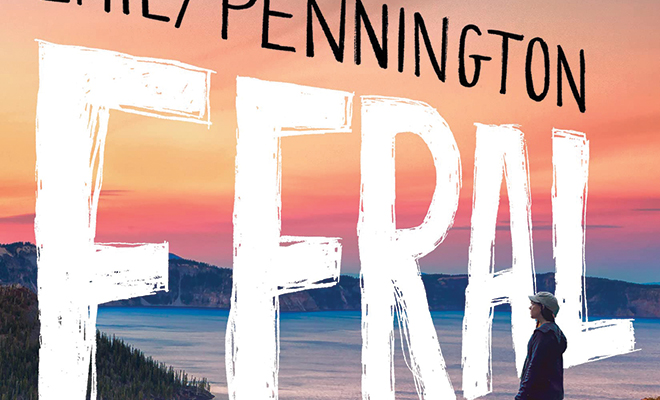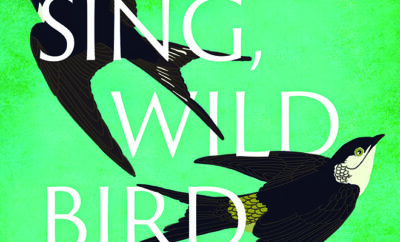
Feral: Losing Myself and Finding My Way in America’s National Parks by Emily Pennington
Emily Pennington’s memoir, Feral: Losing Myself and Finding My Way in America’s National Parks, is one woman’s year-long trek around the United States visiting each of the 63 national parks. The National Park Service consists of 51 national parks in the contiguous continental United States plus eight in Alaska, two in Hawaii, American Samoa and the U. S. Virgin Islands. Though Pennington doesn’t achieve her goal, she is able to complete most of the parks. She visited the last park, American Samoa, in early 2023.
Pennington conceived the idea of visiting these parks over a period of several years. She saved up $30,000, acquired and outfitted a 2015 Ford van nicknamed Gizmo, and, at 32, made plans to visit the parks during a hiatus from working in the city.
How do you cram clothes, food, cooking equipment, camping equipment, a tent, a sleeping bag and more into a small van and still have room to sleep inside? Pennington tells how she outfitted her van for her cross-country adventure. Have you ever wondered how women cope with their monthlies and their other bodily functions while camping out? Have you ever wondered how you cope with the urge to pee in the middle of the night while it is freezing outside? Pennington tells you in frank, blunt language!
When the day finally arrives in early 2020, Pennington sets off. Her first park was Joshua Tree National Park in California, and her first night was a terrifying experience. She suffered with doubts about her personal safety and whether she was capable of handling all the challenges of the plans she had made. An overwhelming feeling of loneliness settled in.
Pennington suffered with loneliness her whole life. Her drug-addict father was mostly absent during her life, and her mother struggled with multiple jobs to ensure their survival. Left to her own devices, Pennington began to feel like a feral child who was abandoned by her parents. Sadly, these feelings followed her throughout her life and never really went away.
As she set out on her journey, the COVID-19 pandemic began. Since this was uncharted territory for everyone, it was hard to know what to do. The National Park Service tried shutting down parks, but did that make sense? After all, weren’t we supposed to be safer in the open air? Like everyone else, she muddled on through.
Pennington wanted to see the parks at their best, so her itinerary was designed to hit the parks at their peak of attractiveness. In other words, it hardly made sense to try to Alaska during winter when blizzards were frequent and disruptive.
Her descriptions of the parks are at times lyrical. “Stars began twinkling onto the obsidian tapestry of night” and at times forced, “…as the sunset turned an immense field of pearlescent dunes into a bubblegum Rothko painting.” Nevertheless, it is the descriptions of the parks and her coping with the hardships of wilderness adventure that make the book interesting.
Pennington’s personal life is a major part of this memoir, as it should be. In the background story, she tells of breaking up with David and her realization that perhaps she didn’t care as much for him as she did the adventures he exposed her to. Fast forward four years, and Pennington is involved with Adam. She loves Adam, and when the slow awareness that he is not as enthusiastic about life in the wilderness as she is leads to their breakup while visiting the national parks in Alaska, Pennington is devastated. Adam is indecisive and a follower. Suddenly, she has an epiphany about her lover; she realizes they are basically incompatible. Thus, they finish the Alaska trip like a couple of old friends.
Sounds simple, but unfortunately this is where the book bogs down. Pennington goes into a tailspin and cannot let go. She bursts into tears over small details of their relationship, and while she is being brutally honest about her relationship, for the reader, it is boring torture. Finally, she pours her heart out to a friend who advises her to seek professional help. To her credit, Pennington does and is eventually able to get over her crisis.
Emily Pennington’s memoir is a personal journey in which she is thrust into unexpectedly challenging situations. She must deal with her feelings of loneliness, her breakup, her deteriorating mental health, COVID-19 and its restrictions, financial issues, wildfires, hurricanes and tornadoes. Still, as Pennington says, “I spent a year wandering the wilderness, and this was where it led me: to a bone-deep knowing that I was strong and capable and joyful and resilient. All pain was conspiring to bring me home.” Can one ask for more from life?







